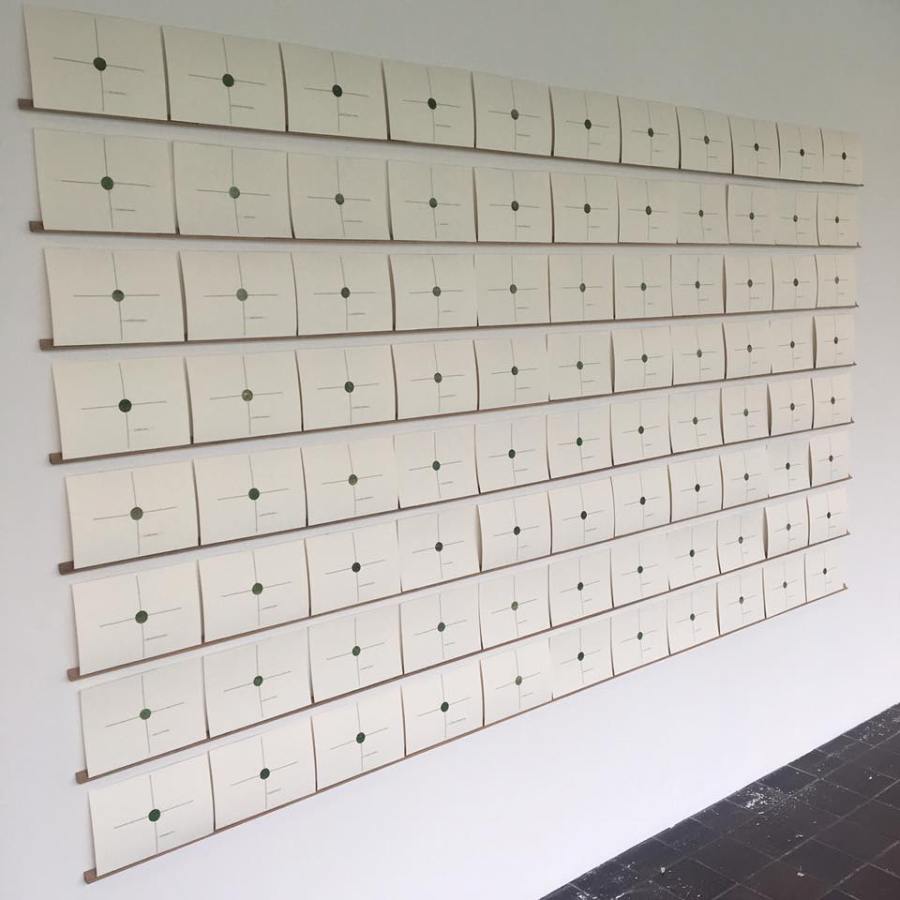
 Elena Cologni. Pratiche di cura, o del cur(v)are. curator Gabi Scardi
Elena Cologni. Pratiche di cura, o del cur(v)are. curator Gabi Scardi
May 17 – July 4, 2021, Fondazione Bevilacqua La Masa, Palazzetto Tito, Venice
in collaboration with resilient communities, the Italian Pavilion, Biennale of Architecture, La Biennale di Venezia.

ExhibitionGuideCologniBLM-FINAL
selected exhibition shots
Affordances, invito all’uso, installation (2021, 150x400x200 cm)
Affordances, invito all’uso, drawing series (2018, 30×40 cm each )
Mother Hooks, sculptures series (2020/various sizes)

Untitled (Prop), (2016, 100x100x5 cm / 200×300×2.5 cm)
Untitled (Prop), maket series), (2016, 25x25x3 cm ciascuno / each)
Intraplaces (recording forms), (2017, collage 80×100 cm ciascuno / each)
Untitled (Studies), (2016, 80×100 cm)
339282.580645 Barleycorns Away… (2017, installazione / installation)

Gropius’ Offcuts, sculptural composition (2015, wood+textile. 18 modules: 120 cm, variable hight and width)
Gropius’ Offcuts, (2015, 3 C-Type prints on allumynium, 35 x50 cm)

‘From the Orchard to the Home’, 1930, EAFA Cat. 589, East Anglian Film Archive, University of East Anglia
the images above are by Giorgio Bombieri, Settore Cultura, Comune di Venezia

Lo scarto (touch), (2015, from the series, porcelain)

Courtesy Comune di Venezia, Settore Cultura – Biblioteca civica VEZ, Fondo Archivio Giacomelli;
from the press release
The exhibition offers a journey through the artistic practice of Cologni starting from series of works – drawings, sculptures, installations and performative choreographies – relating to different moments of her previous research, and to her most recent project specifically created in relation to the Venetian context.
The exhibition project is articulated around a concept dear to the artist: the elaboration of the space of separation; an “intraplace” that unites and separates, which is distance, but also common ground; which is woven with bonds and can be bridged through healing practices.
In fact, Elena Cologni’s work is linked to a marked spatial sensitivity, to the idea of an emotional and social bond, to the awareness of the interdependence between the individual, the community and the environment. More specifically, the artist focuses on the theme of care understood both as a personal relational commitment and in its territorial, historical-social, anthropological and gender dimensions.
Her interventions include an exploration of public and private space starting from historical investigations that in many cases touch on the themes of women’s emancipation in relation to the social and cultural heritage of the past, in this case places for laundry washing. The tendency to carry out participatory actions and to insert works in the public space are expressions of the value that Cologni attributes to collective requests. At the same time, however, the forms of his works, although rooted in physical and social reality, go through a process of reduction, in many cases to the point of abstraction. The recourse to a curved trend, frequent in drawings, sculptures, installations and choreographies of gestures in public space, suggests the need to escape linearity by bringing thought back to the idea of the circle, metaphorically associated with ideas of equity, of participation , of continuity.
The exhibition Elena Cologni. Practices of care. On finding the cur(v)e is alive with different references. On the one hand it is rooted in the history of twentieth century art: there is a direct reference to Barbara Hepworth, who in 1950 took part in the British Pavilion of the Biennale d’Arte and who leaves observations of people in Piazza San Marco, which Cologni sees an antecedent of her choreographed exercises. On the other hand, the artist connects to the Venetian social context of which she investigates traditional crafts in danger of extinction and everyday work environments in order to understand the relationship between domestic space and work space.
The exhibition serves as a reference point for a series of events in Italy and abroad planned during the opening months, as detailed here The Body of/at Work
In Venice:
- 5 June: The Body of/at Work, experiential exercises part of resilient communities Padiglione Italia, 17th Biennale di Architettura 2021, La Biennale di Venezia
- 18 May – 3 July: The Body of/at Work experiential exercises with dialogic sculptures in the city
In London:
- 24 June: Care(less). On invisibility; 25 June: Care(less). On forgetting; 26 June: Care(less). On discarding, are part of the London Festival of Architecture
Live streaming and updates available at https://www.facebook.com/thebodyofatwork/
Collaborations: Padiglione Italia, Biennale Architettura, La Biennale di Venezia; London Festival of Architecture; Laboratorio PRIDE, IR.IDE, Università Iuav di Venezia; Comune di Venezia, Settore Cultura – Biblioteca civica VEZ, Fondo Archivio Giacomelli; Comune di Venezia, Direzione Sviluppo del Territorio e Città Sostenibile AFU – Archivio Fotografico di Urbanistica; Associazione Crespi d’Adda, Comune di Capriate San Gervasio Municipalita’ di Casteverano; The Hepworth Collection, UK; Moleskine Foundation Collection; Homerton College, University of Cambridge; East Anglian Film Archive; Luigi Bevilacqua Tessiture; Anemotech theBreath.
The project is funded by: Artist International Development Fund, British Council; Emergency Fund 2020, Arts Council England; A-N Artist Bursary; Faculty of Arts Humanities and Social Sciences, Anglia Ruskin University. And with the support of Wysing Arts Center.















































 The audience response was the averaged after the exhibition, the RGB information of the selected colours over the period of the exhibition
The audience response was the averaged after the exhibition, the RGB information of the selected colours over the period of the exhibition


